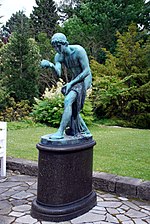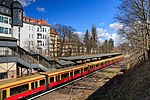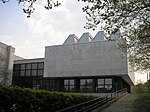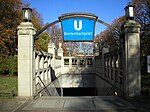Berlin Botanical Garden and Botanical Museum

The Berlin Botanic Garden and Botanical Museum (German: Botanischer Garten und Botanisches Museum Berlin) is a botanical garden in the German capital city of Berlin, with an area of 43 hectares and around 22,000 different plant species. It was constructed between 1897 and 1910, under the guidance of architect Adolf Engler, in order to present exotic plants returned from German colonies.The garden is located in the Lichterfelde locality of the borough of Steglitz-Zehlendorf. When it was founded, a part of it was located in Dahlem, a fact reflected in its name. Today, the garden is part of the Free University of Berlin. The Botanical Museum (Botanisches Museum), together with the Herbarium Berolinense (B) and a large scientific library, is attached to the garden. The Herbarium Berolinense is the largest herbarium in Germany and holds more than 3.5 million preserved specimens.The complex consists of several buildings and glass-houses, such as the Cactus Pavilion and the Pavilion Victoria (which features a collection of orchids, carnivorous plants and giant white water lily Victoria-Seerosen). The total area of all glass-houses is 6,000 m². The garden's open-air areas, sorted by geographical origin, have a total area of 13 hectares. The garden's arboretum is 14 hectares. The best-known part of the garden is the Great Pavilion (Großes Tropenhaus). The temperature inside is maintained at 30 °C and air humidity is kept high. Among the many tropical plants it hosts giant bamboo.
Excerpt from the Wikipedia article Berlin Botanical Garden and Botanical Museum (License: CC BY-SA 3.0, Authors, Images).Berlin Botanical Garden and Botanical Museum
Altensteinstraße, Berlin Dahlem
Geographical coordinates (GPS) Address Nearby Places Show on map
Geographical coordinates (GPS)
| Latitude | Longitude |
|---|---|
| N 52.455 ° | E 13.3036 ° |
Address
Westkaukasus Hochgebirge
Altensteinstraße
14195 Berlin, Dahlem
Germany
Open on Google Maps










